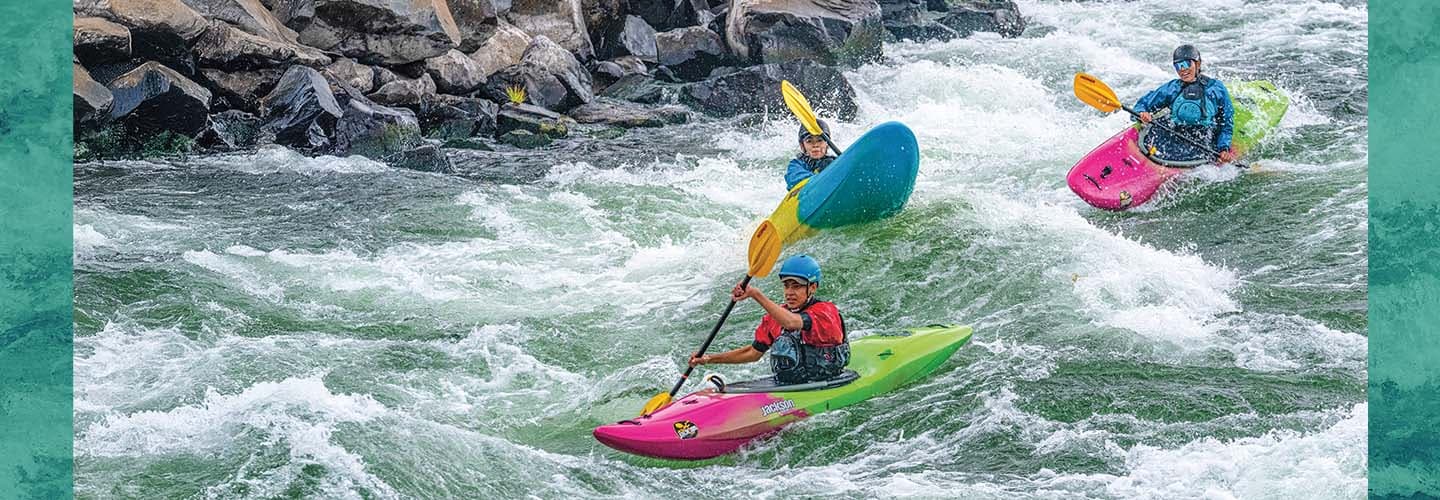River Roots/Rush Sturges
Keeya and Ani Wiki
Ani Wiki stood at the finish line with her parents, cousins, and hundreds of other people. A thick fog hung in the air. Finally, she saw them: her older sister Keeya and dozens of other teens paddling their kayaks through the final stretch of the Klamath River. Ani and the rest of the crowd cheered. Some shed tears of joy.
The teens, all from seven Native groups that live near the river, had just made history. They were the first people to kayak the full length of the Klamath River in more than 100 years.
For decades, dams had divided their sacred waterway. But after years of fighting, local Tribes had recently gotten most of the dams removed. To celebrate, Keeya, 17, and the others spent 30 days last summer kayaking down the free-flowing river. The trip took them from Southern Oregon to the Pacific Ocean off the coast of Northern California (see map).
Ani will never forget watching her sister complete the historic journey.
“It was so special,” the fifth-grader says.
Ani Wiki stood at the finish line. She was with her parents, cousins, and hundreds of others. A thick fog hung in the air. Finally, she saw them. Her older sister Keeya, 17, and dozens of other teens were paddling their kayaks. They were passing through the final stretch of the Klamath River. Ani and the rest of the crowd cheered. Some cried tears of joy.
The teens were from seven Native groups that live near the Klamath River. They had just made history. They were the first people to kayak the full length of the river in more than 100 years.
For decades, dams had divided their sacred waterway. But local Tribes had recently gotten most of the dams removed. That was after years of fighting. To celebrate, the teens spent 30 days last summer kayaking down the river. The trip started in Oregon. It ended in the Pacific Ocean off the coast of Northern California (see map).
Ani will never forget watching her sister finish the historic journey.
“It was so special,” the fifth-grader says.

